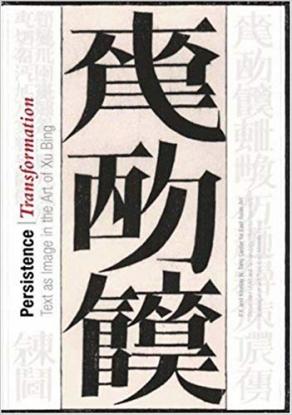Publications
Text as Image in the Art of Xu Bing

132 pp. | 10 × 6.5 | 59 halftones
The calligrapher and book artist Xu Bing has been called the most innovative Chinese artist of our time. As a citizen of both China and the United States and the first Asian-American artist to win the prestigious MacArthur Foundation “genius award,” Xu Bing has fascinated and challenged audiences around the world with his imaginative textual art. From his 4,000 unreadable Chinese-looking characters, which unite Asian and Western audiences alike in an egalitarianism of induced illiteracy, to his invention of a “square words” language that makes “Chinese” readable by anyone at all, Xu Bing’s use of language is at once artistically brilliant, highly entertaining, and profoundly subversive-a sharp-witted, masterly word-play that, in his own words, “strikes at the very essence of culture.”
In exhibitions on four continents, Xu Bing’s printed art, mixed-media installations, and performance pieces-from books and calligraphic sculptures to inscribed pigs-have fascinated specialists and general audiences alike and generated a growing body of literature. This volume presents the first multidisciplinary study of Xu Bing’s art and its intellectual implications. Included is an illuminating account by Xu Bing of his own work, as well as essays by leading scholars in a number of different fields. The essays address the place of this work within the long history of Chinese calligraphic practice, examine it in the context of Chinese intellectual dissidence, discuss Japanese avant-garde parallels, and judge it from a Western art-historical viewpoint. The contributors are Hal Foster, Robert E. Harrist, Jr., Perry Link, and Gennifer Weisenfeld.